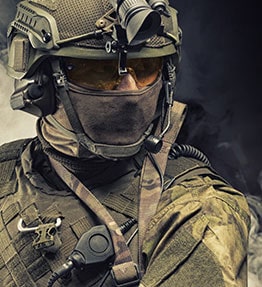Protection and anti-piracy techniques in shipping

The economic cost of piracy is significant but the damage done to human life is incalculable. It is difficult to determine the specific costs of piracy, but fortunately, there are several methods available to help combat and deter piracy. As piracy continues to thrive, and attacks and kidnappings see a marked rise. It is understandable why crews and vessels continue to invest heavily in anti-piracy measures. There are multiple anti-piracy options available with varying degrees of success depending on the situation.
Below are a few examples of anti-piracy methods:
Evasion
Evading pirates may sound simplistic but if a ship can avoid pirates, it will not be at risk of attack. It is a simple and non-combative option but has its disadvantages. For example, the added cost of time and fuel can make it counter-productive for many, and therefore not a viable solution. However, for others making one-off journeys is an effective option.
Water Hoses
Water hoses are the most commonly used anti-piracy weapon and are certainly one of the simplest and cheapest solutions available. By targeting attackers with water hoses, crews can make boarding a ship impossible by creating slippery surfaces or pushing pirates from their boats.
Foam
Foam is similar to water hoses in its aim. By coating the surface of a ship in slippery foam, it is difficult for pirates to board. However, this method brings concerns over the environmental impact of using foam.
Barbed Wire
Many ships are reluctant to use barbed wire, as it is a particularly aggressive solution. Even though it is not ‘actively’ combative, it still creates a hostile image, one which many civilian ships find distasteful. Nevertheless, covering ships in barbed wire is extremely effective in preventing pirates from boarding.
Armed Guards
Unlike the above methods, deploying armed guards on a ship is an aggressive method of preventing piracy. Displaying to pirates a readiness for an attack is a key consideration in hiring private security to protect ships. Statistics have shown that vessels employing private protection have a far lower rate of boarding than other ships. Maritime security is not always combative and can serve as a deterrent but can be costly due to the equipment they need, which includes anything from weapons to bulletproof vests.
Sonic Weapons
Sonic weapons or ‘Long-Range Acoustic Devices (LRAD)’ can immobilize attackers with focused sounds. These weapons have proven to be very effective in stopping pirates.
Other more common methods include rubber bullets and non-lethal explosives.
The above methods are just a few examples of deterrents that are used in combating piracy. Using these methods in tandem can help reduce the cost of a pirate attack and keep vessels and their crews safe.
 US
US UK
UK SE
SE NL
NL FR
FR ES
ES DE
DE







